Persons Involved
This page provides information on a number of the people who were involved in the Kinross case in one way or another, including some of the people who investigated or wrote about the case.
1st Lt. Felix Eugene Moncla, Jr
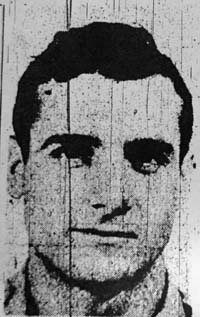 Lt. Felix Eugene Moncla, Jr.
Lt. Felix Eugene Moncla, Jr.1st Lt. Felix Eugene Moncla Jr. was pilot of the F-89 which went missing over Lake Superior. He was a member of the 433rd Fighter Interceptor Squadron based at Truax Field in Madison, WI. At the time of his disappearance, he was on temporary assignment to Kinross Air Force Base while fighter jet and ground crews were doing gunnery training in Yuma, AZ.
Lt. Gene Moncla was born October 21, 1926 in Mansura, Louisiana. His father, Felix Moncla, Sr. was a high school science teacher and principal. His mother, Yvonne, was a seamstress and looked after the family for many years while Gene's father was hospitalized. Gene had two older sisters, Leonnie and Muriel.
Some time after his father was hospitalized, Gene's family moved to Moreauville, Louisiana and moved in with his mother's brother Herman Beridon and a great aunt. He attended high school in Moreauville where he excelled in athletics. He was popular with the girls in high school who voted him Prom King. On graduation, he attended Southwest Lousiana Institute on an athletic scholarship. There, he played football and obtained his Bachelor of Science degree.
After graduating, he enlisted in the US Army and served overseas in the post World War II occupation of Japan. Returning to the US, he enrolled at the University of Louisiana in New Orleans where he was studying to be a doctor. When the Korean War started in 1950, Gene enlisted in the USAF as an officer pilot trainee.
After spending a few months working at a desk job in Dallas, Gene was sent off to Connally Air Force Base in Waco, Texas for his basic pilot training. It was here that he met and married his wife, Bobbie Jean Coleman. Gene took his advanced pilot training at Reese Air Force Base in Lubbock, Texas and further training on the F-89 at Tyndall Air Force Base in Panama City, Florida. It was here that Gene and Bobbie had their first child, a son.
Gene and family moved to Madison, Wisconsin in July 1952. Gene and Bobbie had a daughter in Madison, who was five months old at the time of Gene's disappearance. The last time Gene's sister Leonnie saw Gene was the summer of 1953, when he had a brief stopover at Denver Airport, while flying a refit F-89C from California to Madison.
At the time of Gene's disappearance, he was looking forward to returning to civilian life and going back to school.
Gene Moncla Photo Album2nd Lt. Robert L. Wilson
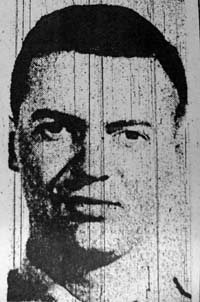 Lt. Robert L. Wilson
Lt. Robert L. Wilson2nd Lt. Robert L. Wilson was the radar operator in the F-89 which disappeared in the Kinross Incident. His hometown was Ponca City, Oklahoma.
He was quiet spoken, reserved and serious about his career.
When I spoke with William Mingenbach about him, he spoke highly of him.
It was for me a very strange experience to speak to William Mingenbach about Robert Wilson. As he talked about him, I was thinking, "Yes, that is exactly as I remember him." It is through memories of an incident which happened when I was three years old, that I have my most vivid "memories" of Robert Wilson.
I have not located any living relatives or acquaintances of Robert Wilson, other than William Mingenbach, so I would be most interested in hearing from anyone who knew him and who might be able to tell me more about him.
1st Lt. John W. Schmidt
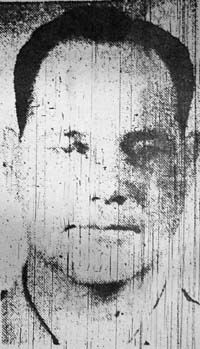 Lt. John W. Schmidt
Lt. John W. Schmidt1st Lt. John W. Schmidt was the pilot of the F-89 which crashed into a marsh at the edge of Lake Wingra, in Madison, Wisconsin, on the same day the F-89 disappeared over Lake Superior.
He was an Air Force veteran of the World War II, where he served in the Pacific region. His hometown was Del Rio, Texas.
He was married with a two year old son and pregnant wife at the time of his death. By coincidence, he was also a neighbor and friend of Gene Moncla, his apartment was just a few yards behind the Moncla's apartment in Madison.
In his surviving portrait he has a grim expression. In my "memories as Moncla", I recall him as somewhat shy but friendly. As the father of a young son who was the same age as Gene Moncla's son, him and Gene shared much in common.
I am interested in hearing from any surviving relatives or friends of Lt. John Schmidt.
Capt. Glen Collins
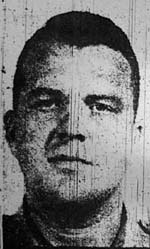 Capt. Collins
Capt. CollinsCapt. Glen Collins was the radar observer in the F-89 which crashed into a marsh at the edge of Lake Wingra, in Madison, Wisconsin, on the same day the F-89 disappeared over Lake Superior. From information I received from a member of the 433rd Fighter Interceptor Squadron, he "was just along for the ride" on the fatal flight.
He was a veteran of the World War II.
He was married with two daughters at the time of his death. He was from Indianapolis, Indiana.
2nd Lt. Douglas A Stuart
2nd Lt. Douglas A. Stuart was the key GCI controller at Calumet AFS who tracked and guided the ill-fated intercept of the F-89 over Lake Superior. His testimony is the key part of the account on which the US Air Force accident report is based.
It is my interpretation that some parts of his written statement are probably untrue as they are in contradiction to other evidence - particularly with respect to the RCAF C-47 being off course by 30 miles and this being the reason for the intercept.
However, this is my interpretation. I doubt he would provide a false statement, unless this was done under duress. It would be interesting to know what he might have to say about his memory of this incident, if he is still alive out there somewhere.
During the course of my investigation, I had a telephone conversation with Ray Stanford, a UFO Investigator, who was at one time affiliated with famed (and much maligned) contactee, George Adamski. It was very interesting to talk to Ray Standford who provided some interesting memories about his time with Adamski. Like many of Adamski's acquaintences, he spoke about George in perhaps less than laudatory terms.
With respect to the Kinross Incident, he told me that his brother had once met a GCI operator who was a key observer of the Kinross Incident. I am not certain if this was supposed to be Lt. Stuart or another observer. His brother told him that he had met this man at university, (in Texas I believe), where the man was studying to be a minister or priest. The man had apparently told Ray's brother that the radar target of the bogie in the Kinross Incident was very unusual, very large and consisting of a number of parallel lines.
Of course, this is just third hand hearsay, but I include it because it might lead to more information from GCI operators who participated in or witnessed the Kinross Incident on radar and radio.
2nd Lt. Bill Mingenbach
2nd Lt. William Mingenbach was an F-89 pilot with the 433rd Fighter Interceptor Squadron at Truax Field, who was serving on temporary assignment at Kinross Air Force Base with Lt. Moncla and Lt. Wilson. Him and his radar observer were on alert duty with Moncla and Wilson when the scramble horn blasted for the alert which Moncla and Wilson responded to.
After Moncla and Wilson took off that night, Mingenbach and his radar observer went for dinner. When he returned from dinner, he requested a CAP mission (Combat Air Patrol). Once he was airborne, he was informed that Moncla and Wilson's F-89 was missing and he was guided to the area of last contact. During his flight, he continuously attempted to make radio contact with Moncla and Wilson. About 40 minutes after radar and radio contact was lost with Moncla and Wilson's plane, Mingenbach and his radar observer heard an unexplained short radio transmission which both airmen believed to be the voice of Lt. Moncla, which tehy recognized by his slow and calm, southern drawl. The transmission sounded to them like an accidental transmission, which Lt. Mingenbach stated contained the words "we had better..."
After completing his service with the Air Force, he became an architect. He and his wife moved to New Mexico where he designed buildings which incorporated solar heating technology.
I have spoken to William Mingenbach and told him some of my unexplained memories that I seem to have that might relate to Lt. Moncla's experiences. I mentioned to him one memory I have of Moncla being in the ready room with Lt. Mingenbach. Moncla was seated on a chair by a counter on which sat a radio. Moncla was listening to the song, "Santa Baby", sung by Eartha Kitt. It was new on the charts, and he had his ear close to the speaker as he wanted to hear the words. I recall that Lt. Mingenbach was seated at a table and he wasn't much impressed with the song. He didn't recall the incident, but he did say that there was a radio in the ready room. I told him that I could remember he had straight brown hair, which he said was true. One thing I later found out was wrong. I thought that Bill was of medium height, but he actually is quite tall, I think taller than Lt. Wilson who was several inches taller than Lt. Moncla.
I also told him a little about some of the experiences I could recall from Moncla's time in captivity. I told him I could remember that Lt. Moncla had kept a sort of diary. He had used a log book that I thought he had with him on the plane. Lt. Mingenbach told me that there was a log book kept under the pilot's seat in the cockpit which was used to record things like mechanical problems. He said it had an aluminum cover and was about 9 in. by 9 in or so. Note: I think that the "log book" is actually a "data book" that is kept in the left console in the front pilot's cockpit.
I also told him that I could remember that when we had heard that it was Schmidt and Collins who were killed in the F-89 crash in Madison, that he had commented to Moncla that Schmidt and Moncla had been friends, and that Moncla had just sort of shrugged it off, not wanting to show any emotion. He couldn't remember this.
Another thing that I found interesting is Bill told me that he remembered that he had driven his car up to Kinross. I guess that four crews flew F-89s up to Kinross (as they needed at least four F-89s to meet Alert duty requirements). I had "remembered" that Lt. Moncla had driven his own car up to Kinross which he used to drive to the base from the tourist court he was staying at in Sault Ste. Marie. So Bill's statement suggested to me that a number of the officers were staying in Sault Ste. Marie, and (at least some of them) used their personal vehicles to commute back and forth from Sault Ste. Marie. I imagine that the officers were staying in Sault Ste. Marie since they did not have places to temporarily house officers on base (or didn't have enough temporary officers housing)
He talked a little about Lt. Wilson, and it was clear that he held him in high regard. It was strange hearing someone talk about Wilson, as Mingenbach is the first person I have met who knew Wilson, and when he talked about him, I really felt like he was describing the man I recall meeting when I was three years old who took me up the hill which overlooked Lake Superior.
Lt. Col. Harry Shoup
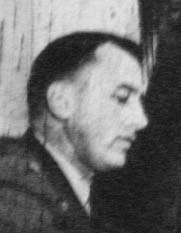 Lt. Col. Shoup
Lt. Col. ShoupLt. Col. Harry W. Shoup was the base commander at Truax Field in Madison at the time of the Kinross Incident. Gene Moncla's widow told me that she was visited by Lt. Col. Harry Shoup and the base chaplain the night of Gene's disappearance.
It was Lt. Col. Shoup who conducted the press briefing on the disappearance of the F-89 over Lake Superior, the day after the incident. It was his theory that the pilot had banked steeply during the intercept and had lost control and altitude, crashing into the lake.
In Donald Keyhoe's book, "The Flying Saucer Conspiracy", radio commentator, Frank Edwards, told Donald Keyhoe that someone at Truax Field might be in trouble for violating AFR 200. This was apparently the first time that Keyhoe had heard of the Air Force order which required genuine UFO reports to be withheld from the public. My guess is that Shoup was the one who would have gotten in trouble for providing information in the press conference about the targets merging on radar before the F-89 disappeared. My interpretation of the incident is that Lt. Col. Shoup didn't know anything about the UFO angle to the incident at the time of the press briefing and therefore was totally innocent of any potential transgression on official Air Force policies to withhold information from the public about real UFO incidents.
Lt. Col. Shoup was a survivor of a tragic flight on Jan 31, 1953, when four F-86 Sabre jets from Truax Field, crashed during a snowstorm. Shoup was a pilot of one of two planes which was able to land safely. Two pilots survived after parachuting from their stricken jets. Another two pilots perished.
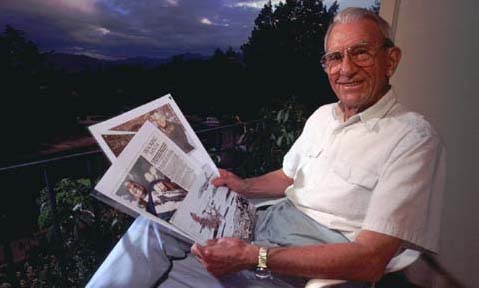 Col. Harry Shoup CONAD's Commander in Chief in 1955 was able to track "Santa Claus" on radar
Col. Harry Shoup CONAD's Commander in Chief in 1955 was able to track "Santa Claus" on radarI believe that Lt. Col. Shoup was later made a full colonel and transferred to Ent. Air Force Base in Colorado Springs, which is the location of NORAD's main command centre.
Some readers may be aware that NORAD has tracked Santa Claus on Christmas eve for more than 50 years. Col. Shoup was a key part in originating this program while he was serving at CONAD headquarters in 1955. That year, Sears Department Store in Colorado Springs ran an ad with a number for children to call Santa Claus. Through some mysterious error, the number which was printed turned out to be a connection to the red phone at CONAD (Continental Air Defense Command) operations center. When Shoup picked up the red phone with a child asking for Santa, Shoup asked the child where he got the number. As then commander-in-chief of CONAD, he was quite "in the know" on the whereabouts of "Santa Claus", and was able to give the child an update on Santa's present whereabouts, which were tracked on CONAD's radar.
The tradition of CONAD's "Santa tracking" was born, and was continued when the USA and Canada formed NORAD in 1958.
I believe that one of my "memories as Moncla" involved Lt. Col. Shoup. One memory I had was of painting the prototype version of the Blue Streak paint job in a hanger at Truax Field. Part of this memory was a senior officer at the base coming in to review the work. If any of this is right, it was possibly Harry Shoup I remember who came in to look at the finished effort. I recall it was him who had come up with the idea to call the painted bird "Blue Streak", which was by some coincidence, the name of the early edition of the Wisconsin State Journal, published in Madison.
Maj. Forrest Parham
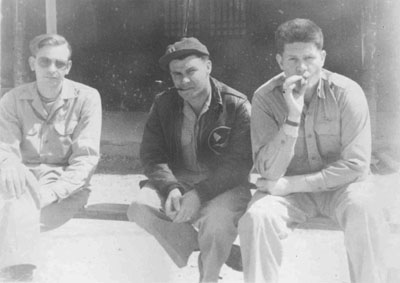 Forrest Parham (in middle) serving with 75th Fighter Squadron in WWII
Forrest Parham (in middle) serving with 75th Fighter Squadron in WWIIAt the time of the Kinross Incident, Major Forrest Parham was the commander of the 438th Fighter Interceptor Squadron based at Kinross Air Force Base. He served on the Accident Investigation Board which investigated and provided the official USAF response to the Kinross missing F-89 incident.
He was born October 5, 1917 in Saskatchewan, Canada. He was raised in Minnesota. He served in the US Air Force during World War II and the Korean War. During the Second World Was, he served with the legendary Flying Tigers and achieved the title of "Ace". He received the Distinguished Flying Coss with two oak leaf clusters, Air Medal with eight oak leaf clusters, Distinguished Unit Citation, Soldiers Medal, and two Bronze Service Stars. After serving at Kinross, he moved on to serve at Ladd Air Force Base near Fairbanks, Alaska and at Colorado Springs.
After 28 years in the military, he retired (with a rank of Colonel) to Moreauville, Louisiana (by strange coincidence, Lt. Moncla's hometown), where he founded and operated Moreauville Flying Service, Inc., an agricultural aviation buisiness.
The last day I was in Moreauville, Louisiana in October, 2002, someone gave me his name and phone number and mentioned that he had served at Kinross AFB. At the time, I didn't realize that he had served on the Accident Investigation Board. When I got back to Vancouver I called him and talked to him for awhile about what he recalled about the incident and about his other experiences in the Air Force. We also talked a bit about UFOs, and he mentioned someone he knew in Alexandria, who knew something about the topic. With respect to the Kinross Incident, he said that the RCAF C-47 had not filed a flight plan or that the flight plan had not reached the GCI. He also reiterated that the C-47 had drifted south over the lake. Since I didn't know that he had been on the Accident Investigation Board, I thought that he was just giving me the second hand "official version" of events which everyone had heard at Kinross.
If he knew more than that, I certainly never suspected. He seemed to be fully forward with me about what he knew. It is possible that he was telling me all he was supposed to tell me. I think that he did mention to me that it had been a little hard for him being in Moreauville, where maybe some people thought that the Air Force was not telling the full story about Gene Moncla's disappearance.
Being that Moreauville, Louisiana is a small, close-knit town, it should not be too surprising that Forrest Parham was married into a family to which Gene Moncla was distantly related. Parham's wife, Eileen was a Coco, and one of Gene's cousins on his mother's side, was also married to a Coco.
It was a year or so after I talked to Forrest Parham, when I wrote to him asking for more information and asking if he had any phtographs of himself or Kinross Air Force Base. I was shocked and saddened to learn that he had passed away, December 11, 2002, little more than a month after I had talked to him on the telephone.
Flight Lieutenant Gerald Fosberg
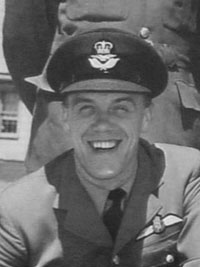 Flight Lt. Gerald Fosberg, RCAF
Flight Lt. Gerald Fosberg, RCAFAt the time of the Kinross Incident, Gerald Fosberg was a flight lieutenant with the 412th Squadron at Rockcliffe Air Force Base near Ottawa, Ontario.
He was the pilot of RCAF C47, VC-912, which is the aircraft which the USAF claimed the F-89 was sent to identify because it had (the USAF claimed) drifted 30 miles from its flight plan over Lake Superior.
The USAF also claimed that this was the "bogie" with which the F-89's radar return had merged with on radar before contact was lost with the F-89.
Gerald Fosberg seemed to have a pretty clear recollection of the incident, and insisted to me that his plane was never off course on that flight. Note that a GCI was able to contact them by radio, so it doesn't make much sense that it would be necessary to send up an F-89 to identify the plane, when it was reachable from radio. It is possible that it was only the Canadian GCI operators who were able to contact the RCAF aircraft, but it is clear from the incident that US GCI stations and Canadian GCI stations must have had some capability to communicate with each other, otherwise, how would they be able to make the inquiry asking if the C47 crew had seen the F-89.
It took me some amount of searching to find the names of the crew on the the RCAF C47 which flown over Lake Superior that night, but it was fairly easy to locate the pilot of the aircraft once I had his last name. In response to a letter of inquiry, Gerald Fosberg wrote back the following letter to me.
01 Mar. 2004
Gerald Fosberg
(Address deleted)
Dear Gord:
I'm your man! I was at the time indeed serving with the 412 Sqn. At Rockcliffe, doing what I loved best – flying aeroplanes. At the time I was a flight Lieutenant, married with our first of three children on the way. Served 28 years and retired in May 1974 as a major. Continued flying Corporate Jets for another twenty years.
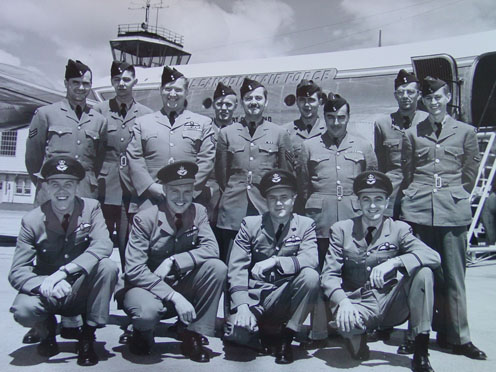 412 Squadron, RCAF - Rockcliffe, Ont.
412 Squadron, RCAF - Rockcliffe, Ont.I remember the flight reasonably well, and just checked my log books to confirm the date. It was a night flight. We were probably at 7,000 or 9,000 feet over a solid cloud deck below and absolutely clear sky above.
Somewhere near Sault Ste. Marie, and north of Kinross AFB, I think a ground station (can't remember whether it was American or Canadian) asked us if we had seen another aircraft's lights in our area. I do think I recall them saying at that time that the USAF had scrambled an interceptor and they had lost contact with it. We replied that we had not seen anything. A few days later I received a phone call from somebody at Kinross who was carrying out an investigation on a missing aircraft. I could only tell them that we had seen nothing. That was the last I ever heard of the incident.
Sorry! However, if the mystery is ever solved please, would you let me know the answer.
Sincerely,
Jerry F.
UFO Investigators
Major Donald Keyhoe, USMC Ret.
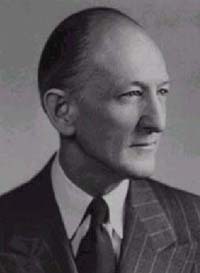 Maj. Donald Keyhoe, USMC Ret.
Maj. Donald Keyhoe, USMC Ret.Source: Richard Hall's website "www.hallrichard.com/keyhoe.htm". Richard Hall was a long time associate of Keyhoe at NICAP and has also published important works pertaining to the study of UFOs. He assisted my investigation by providing me access to the Donald Keyhoe archives, where I located correspondence between Donald Keyhoe, and Lt. Moncla's mother, Yvonne Beridon Moncla, and Lt. Moncla's brother-in-law, J.D. Koctar.
At the time of the Kinross Incident, Donald Keyhoe was one of the most knowledgeable and well connected of the UFO investigators in the USA. He had recently written a major book on the UFO phenomenom, "The Flying Saucers are Real", and was still immersed in the political battles being fought over USAF policy with respect to how to address the UFO issue with the American public.
Without Donald Keyhoe's focus on the Kinross Incident in his book, "The Flying Saucer Conspiracy", it is likely that only a few people would be acquainted with any of the puzzling circumstances behind the disappearance of Moncla and Wilson in their F-89.
Donald Keyhoe was born in Ottumwa, Iowa, on June 20, 1897. He attended the U.S. Naval Academy in Annapolis, Maryland where he graduated with a B.S. degree in 1920 and earned a sommission as 2nd Lieutenant in the Marine Corps. He became a naval aviator, flying balloons and airplanes. Keyhoe commanded a flight of seaplanes supplying the U.S. base in Guam, where he crashed during a night flight. He retired from active duty and began a freelance writing career.
He worked as editor of the Coast and Geodetic Survey publications. Keyhoe managed Floyd Bennett's national tour after he flew over the North Pole on May 6, 1926. He was also assigned as an aide to Colonel Charles Lindbergh, after Lindbergh flew the "Spirit of Saint Louis" in tthe first solo flight over the Atlantic Ocean. Through his tour with Lindbergh, he made many nationwide contacts, which would help him in his later research into UFO phenomena.
During World War II, he was recalled to active duty and served in the Naval Training Division at the Pentagon.
When the first post-war reports of UFOs were widely reported in 1947, Keyhoe was sceptical, but investigated the phenomena for True magazine. Through his further investigations, he became convinced that UFOs originated from outer space and that the US Air Force was covering up what they knew of the truth.
His article "Flying Saucers Are Real" was published in True magazine in January 1950. The article saused a sensation, and was expanded into a paperback book by Keyhoe. He wrote several books on UFOs, all of which are considered classics in the study of UFOlogy. In 1957. he Keyhoe became Director of the newly formed National Investigations Committee on Aerial Pheonomena (NICAP). As director of NICAP, he encouraged the US Congree to conduct hearings into unexplained UFO incidents. He is considered by many UFOlogists, to be one of the most important influences in the study of UFOs.
Dr. Richard Haines, NARCAP
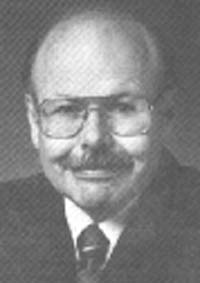 Richard Haines, NARCAP
Richard Haines, NARCAPRichard F. Haines was born and raised in Seattle, Washington. He attended the University of Washington, College of Engineering, and the Pacific Lutheran College in Tacoma, where he received a B.A. degree in 1960. He obtained an M.A. and Ph.D. from Michigan State University at East Lansing, in the study of experimental Psychology.
He worked as a research scientist at NASA-Ames through much of the US space program (Gemini, Apollo, Skylab and Space Station). As chief of the Space Human Factors Office at NASA-Ames, he directed research and development into the AX-5 EVA space suit and habitability design for Space Station Freedom.
He has actively studied UFO phenomena (or UAP - unidentified aerial phenomena), for thirty years, focussing on pilot witness accounts, analysis of photographic evidence, and data on Close Encounters of the Fourth Kind.
He has written two books and over 20 articles on UFO encounters. He is currently chief scientist for NARCAP, the National Aviation Center on Anomolous Phenomena, which focuses on the importance of research on the effects of UAP on aviation safety.
Richard Haines assisted my investigation by providing me information from his personal file on the Kinross Incident. It was through his clippings that I learned of the discovery of unidentified fighter jet parts near Sault Ste. Marie in 1968.
John Tenney
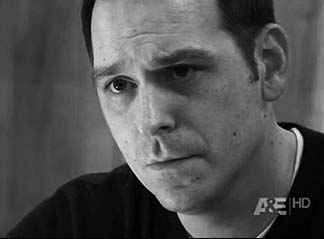 John Tenney
John TenneyJohn Tenney is a UFO (and paranormal anomaly) investigator from Royal Oak, Michigan. He provided me photocopies of the USAF accident report which he had obtained through a FOIA request to the US Department of Energy. Without his efforts, I would not have had access to many of the key documents which were withheld from the previous release of the Kinross Accident Report to CUFON. New documents obtained include the statements made by Lt. Stuart, Lt. Mingenbach, Lt. Nordeck and Capt. Bridges. The testimony of Lt. Stuart and Lt. Mingenbach to the Accident Investigation Board was also obtained through John Tenney's efforts.